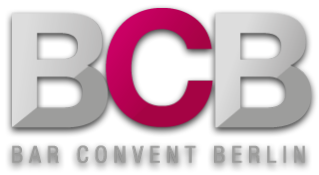Mindful Drinking – The exciting World of Low & No
© Shutterstock
Bar ohne Namen
Entschlossen verweigert sich Savage, der Bar einen Namen zu geben. Stattdessen sind drei klassische Design-Symbole das Logo der Trinkstätte in Dalston: ein gelbes Quadrat, ein rotes Viereck, ein blauer Kreis. Am meisten wurmt den sympathischen Franzosen dabei, dass es kein Gelbes-Dreieck-Emoji gibt. Das erschwert auf komische Weise die Kommunikation. Der Instagram Account lautet: a_bar_with_shapes-for_a_name und anderenorts tauchen die Begriffe ‘Savage Bar’ oder eben ‚Bauhaus Bar‘ auf.
Für den BCB bringt Savage nun sein Barkonzept mit und mixt für uns mit Unterstützung von Russian Standard Vodka an der perfekten Bar dazu.
It's a powerful trend - and it's on the rise: distillates, wines, non-alcoholic and alcohol-free beers. This was even more noticeable at Bar Convent Berlin 2024 than last year, with a huge number of exhibitors presenting their – mostly brand new – products in the mindful drinking category.
Alcohol-free hotspot at BCB 2024
At the centre of the action last year, the Amaro Bar by operator Elon Soddu from London caused quite a stir. With its elegant and striking appearance and central location, the bar in Hall 11.2 quickly became a focal point for all those who don't want to miss out on the latest developments in cocktails with a lower alcohol content and yet don't want to miss out on top-quality mixed drinks. In addition to the range of cocktails that the bar team brought with them from London, there were also new drinks at the Low & No bar counter every day, as all exhibitors were explicitly invited to participate with their products there so that the bar team could experiment with them and develop new recipes.
The opening lecture at Park Street University also provided an appropriate introduction to the topic. Under the heading ‘The Future of Mindful Drinking in Modern Markets’, renowned international players came together for a discussion. These included London-based drinks industry analyst Spiros Malandrakis and the founder of La Maison Wellness in France, Camille Vidal, who, as she herself says, is an advocate of healthy hedonism. Also present was Raphael Vollmar from Bonn, co-founder of Rheinland Distillers, with the Siegfried brand, under which he brings out alcoholic and non-alcoholic products.
© BCB / FRBMedia
Trend became a show highlight: at the Low & No Bar at BCB 2024, the Amaro Bar team from London impressed with low-alcohol and alcohol-free cocktails.
Status quo at Low & No?
The three panellists have been observing market developments for a long time, giving the audience an outstanding overview and visionary thoughts on the future.
With 20 years in the industry, Spiros Malandrakis summarises his observations and starts with the Seedlip brand, which kicked off its development in 2015 with 1,000 bottles in London's Selfridges department stores': ’Seedlip did it wisely back then. They communicated in the first press release not what they were taking out of the drink, but what they were adding to the occasion. That way, there was no negativity and a positive benefit was generally perceived. Seedlip's only problem was that they didn't have an established spirits background.’
Raphael Vollmar smiles and remembers how acquaintances tried to stop him from putting the tried-and-tested gin name ‘Siegfried’ on a bottle with alcohol-free contents: ‘We were pioneers back then when it came to putting a tried-and-tested brand name on a bottle of an alcohol-free product for the first time. In the meantime, the knowledge that the alcohol-free category exists has reached the centre of the population. It all started back then with alcohol-free gin alternatives. Today, bars have a complete alcohol-free backboard. I think there was this click moment of appreciation when consumers realised that these products came from real distillers.’
Away with the mocktails
The panellists agree that the term ‘mocktail’ is a hindrance to development. ‘To mock’ often stands for the consolation prize, the second-rate product and for a long time the cocktail menus were adorned with the same boring-sweet representatives: Shirley Temple, Virgin Colada, Pussy Foot.
Camille Vidal is delighted that more and more large companies are joining in: ‘The big companies are doing a great job of promoting communication and training. This has been lacking until now. We need to work on creating a new, independent category, not a category where something is missing. Mocktails were always much cheaper. Now we have non-alcoholic distillates at the same price level as real spirits. The pricing of non-alcoholic cocktails also needs to be adjusted.’
The three agree that the target groups for Low & No are very diverse. The target group also drinks alcohol on some days. But on other days, they want a drink without alcohol but with the same sophistication, with the same standards. A good drink remains a status symbol. The pandemic has also created a general health awareness, which has significantly boosted sales of non-alcoholic products.
1000 new labels
Malandrakis warns against too much premiumisation: ‘We have seen an increase of a thousand new labels in the non-alcoholic market since 2020. Premium categories always exclude target groups. We need affordable products so that our category leaves the niche and becomes part of the mass market.’ Vollmer agrees and points out that although alcohol-free can point to impressive growth, it is still a small niche.
There is still a lot of movement in an industry with a growing category. Certain ingredients that are already authorised in the USA are still awaiting approval in Europe and yet new products are constantly coming onto the market. Are we on the cusp of a new era?
Social media characterises new trends and reflects them at the same time. Gen Z is increasingly using hashtags online such as #drydating #sober, #sobriety, #mindfuldrinking or #sobertwenties. We are sure to see some big steps in the low & no category at BCB next year.
